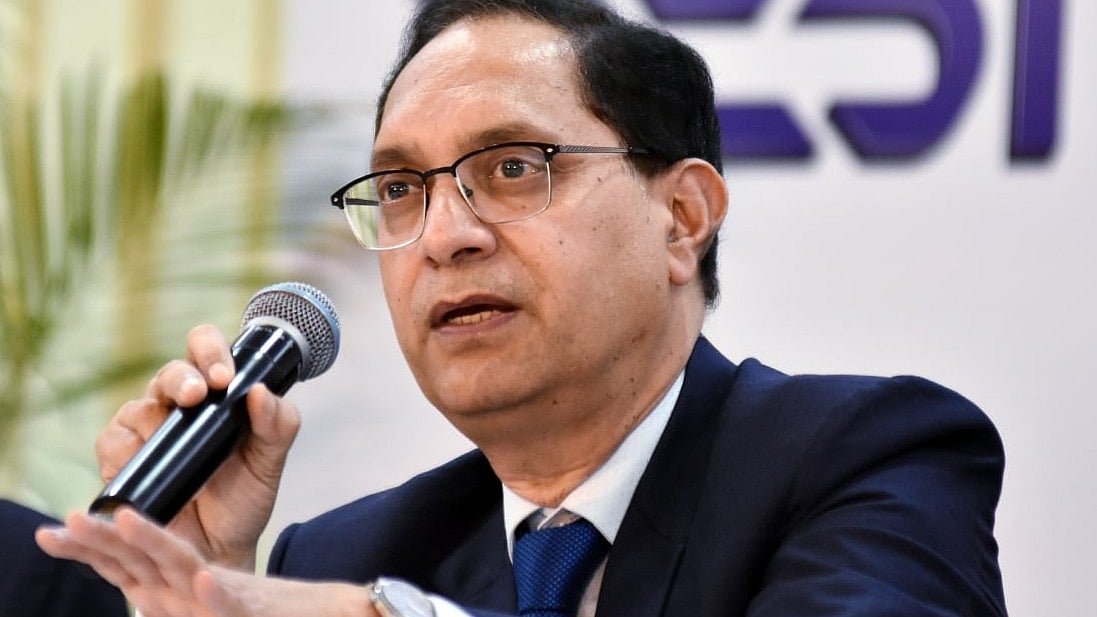New Delhi: The slowdown in economic activity in developed countries may curb global demand for steel, which is seen growing at a weaker pace in 2020. On the other hand, firm demand and strong economic activity in India and other emerging markets may come to the sector's rescue.
Economic development and rapid urbanisation in India and other merging markets are likely to push up global steel demand by about 30 mln tn next year, even as developed countries witness a deceleration in demand growth, World Steel Association Director General Edwin Basson said.
Global steel demand is seen growing by 3.9% to 1,775 mln tn in 2019, but growth may slow down to just 1.7% to 1,805.7 mln tn in 2020, according to the association's projections.
The sharp drop in the demand growth in 2020 is mainly seen in the developed countries due to lingering concerns over the trade dispute between the US and China, and weakness in construction and manufacturing activity.
Demand in emerging market countries, however, may partially offset these global downturns.
"Globally, the construction market has been rising in virtually every country as new infrastructure is still developing in countries such as India and Southeast Asia," Basson told Cogencis in an interview. "This is mainly driven by people moving from the country-side to cities. We see this becoming larger, and would require more steel."
Infrastructure development and urbanisation could propel steel demand in India for a much longer period, despite the current hurdles being faced by the industry.
"... irrespective of local issues and regulatory challenges, I think the dominoes are positive and if they start falling, the Indian steel market could see a very positive decade going ahead," Basson said.
Below are edited excerpts of the interview:
Where do you see global steel demand in 2020? And where does India stand in terms of playing a major role in the demand perspective?
Our latest estimate for 2020 indicates that the global steel market is likely to grow by 30 mln tn. The demand is mainly seen here in India and Southeast Asia and a little bit in China, while other countries would remain sideways.
India today is the second largest in the world both in production and demand. The largest is China with a far bigger margin, around 900 mln tn of use and production, and India is the second one with over a 100 mln tn. The third one is the US. Then you have all these regional markets that you have to put together to be competitive. European Union is about a 160 mln tn and it's the second largest on a regional basis.
From virtually every structural factor, India looks very positive as it is in a very strong economic development phase. On top of that, India is experiencing a strong urbanisation phase as well, which bodes well for steel use. So irrespective of local issues and regulatory challenges, I think the dominoes are positive and if they start falling, the Indian steel market could see a very positive decade going ahead.
The global steel industry output is in surplus amid a slowdown in global economic growth and persisting concerns over consumption due to the US-China trade war. Will this cycle end soon?
Yes, there has been an excess capacity of steel production in the last three years and globally it is being discussed in the Group of 20-level forums. China so far has been the star performer in reducing steel production capacity by about 150 mln tn.
How is the steel sector tackling the slowdown in the automobile industry?
The automotive market is not doing very good currently, and we think that it might be a part of a longer-term trend. We believe that the automotive market would stabilise going forward as the industry is currently going through a number of significant questions such as whether to move from internal combustion engines to electrical engines. This delays demand from the customer's end and we in World Steel Association are following these discussions very closely.
We recognise that there is a material competition in the automotive market but at the same time we also know that steel in the last decade or more has undergone tremendous amount of work to become stronger and lighter and is now a very competitive product as far as weight is concerned. So, on weight and strength basis steel is much more affordable than any other material. Though the automotive market is still a good market for steel and we recognise the competition, but now we are currently not focussing on it amid uncertainty over its longer-term structural changes.
So has the focus shifted to construction and related sectors?
For us, the automotive market is important, but it is also nowhere close to our largest market which is the construction market, which includes housing, infrastructure, and non-residential market.
Globally, the construction market has been rising in virtually every country as new infrastructure is still developing in countries such as India and Southeast Asia. This is mainly driven by people moving from the countryside to cities. We see this becoming larger, and would require more steel.
Will the US-China trade stand-off continue to weigh on steel demand?
Not only in China and the US, but globally we are seeing regionalisation of the steel markets, and we think this regionalisation would remain in place in future. Similar conditions were seen in late 1970-80s. So we have to think back on how the markets were then and we have to react and apply it in today's markets.
Are global steel manufacturers trying to reduce their carbon footprint? Where does India stand in terms of environmental issues?
India is in the same position as the global industry today. Steel producers release carbon dioxide in the atmosphere as part of the steel-making process. In most parts of the world, the process of making steel is efficient. But if we want to reduce carbon dioxide emissions further, we need to move towards a very different way of steel making which would require a lot of energy. Any breakthrough technology would probably take a decade before it becomes commercially usable. Between then and now, we think a lot can be done in the steel industry to improve efficiencies even further.
The industry also is working towards a shift in the balance between electric arc furnace and blast furnace which will bring down the average emission levels.









